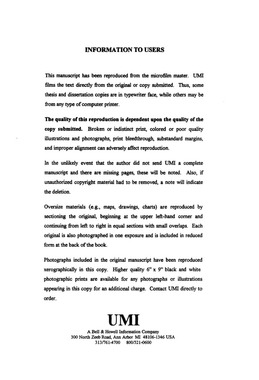| dc.contributor.advisor | Dunne, Timothy, | en_US |
| dc.contributor.author | Alyan, Nafez Mohamed. | en_US |
| dc.date.accessioned | 2013-08-16T12:29:48Z | |
| dc.date.available | 2013-08-16T12:29:48Z | |
| dc.date.issued | 1997 | en_US |
| dc.identifier.uri | https://hdl.handle.net/11244/5506 | |
| dc.description.abstract | In the second half of the dissertation I examine the relationship between changes in skill and alternative measures of technology. The findings of the regression analysis indicate that there is generally a positive relationship between changes in sectoral capital stocks and the change in the wage share of skilled workers. Moreover, I find that computer investment has a strong positive effect on changes in workforce skill. In addition, regressions that include measures of advanced manufacturing technology, such as networks, robots and flexible manufacturing systems, show that the intensity of technology usage is positively related to the change in the wage share of skilled workers. The effect of the technology variable is stronger over longer periods of time. Overall, the findings in this dissertation generally support the hypothesis that technical change is an important factor in explaining changes in the employment share, wage share and relative wages of more educated and skilled workers. | en_US |
| dc.description.abstract | This dissertation examines the effects of technological change on the change in the employment (wage) share of skilled workers. The first part of the analysis decomposes the change in the employment share of skilled workers in the United States into within industry and between industry components. The dissertation uses data from the 1950, 1960, 1970, 1980 and 1990 US decennial Censuses. A large within industry component is often interpreted as being consistent with the skill-biased technical change hypothesis. This hypothesis argues that the observed increase in relative wages of more educated workers is due primarily to changes in labor demand driven by changes in technology. The results of the decomposition analysis are consistent with the findings of other researchers suggesting that an increase in the share of skilled workers is driven by a within industry/within region component. However, two specific points are worth highlighting: (1) The between industry component is significantly larger in the 1950s and 1960s compared with the 1970s and 1980s. (2) The services sector shows a different pattern than all other industrial sectors where the between industry component dominates the within industry component for the early periods. The time series pattern possibly suggests an association between the widespread diffusion of distributed computing and the change in the skill mix. | en_US |
| dc.format.extent | xi, 152 leaves : | en_US |
| dc.subject | Economics, Labor. | en_US |
| dc.subject | Labor supply Effect of technological innovations on United States. | en_US |
| dc.subject | Skilled labor United States. | en_US |
| dc.title | Technology and the change in workforce skill: An examination of United States labor markets, 1950-1990. | en_US |
| dc.type | Thesis | en_US |
| dc.thesis.degree | Ph.D. | en_US |
| dc.thesis.degreeDiscipline | College of Arts and Sciences | en_US |
| dc.note | Source: Dissertation Abstracts International, Volume: 58-05, Section: A, page: 1845. | en_US |
| dc.note | Major Professor: Timothy Dunne. | en_US |
| ou.identifier | (UMI)AAI9733700 | en_US |
| ou.group | College of Arts and Sciences | |
